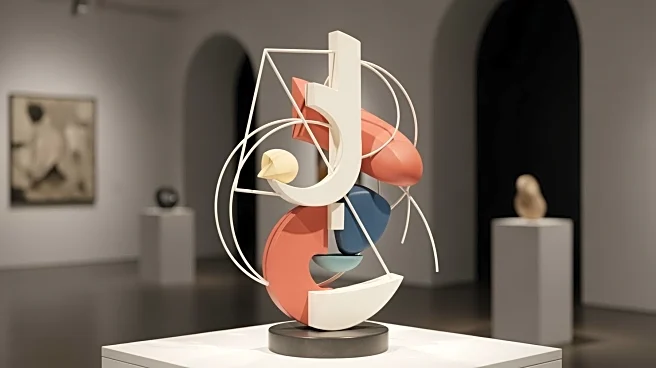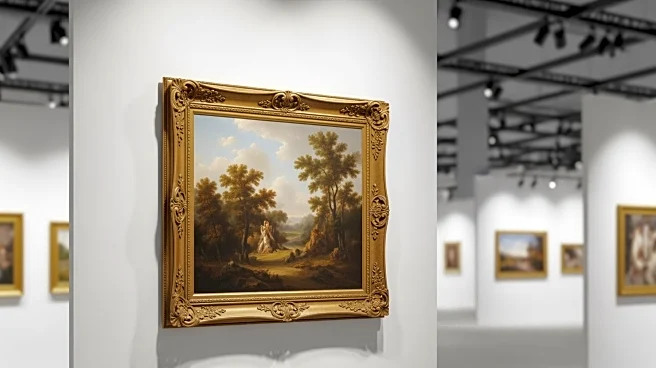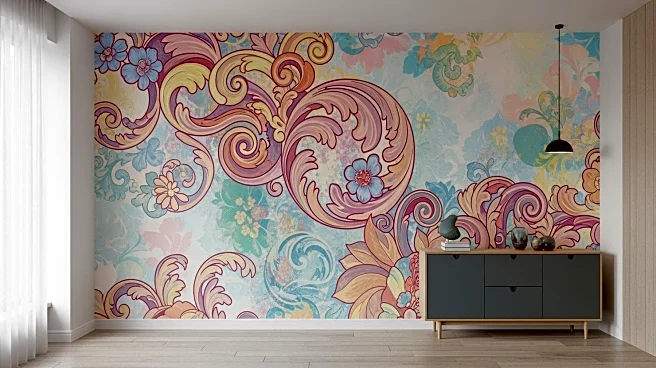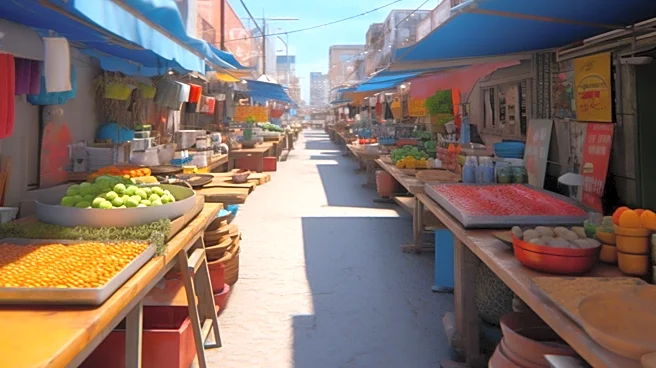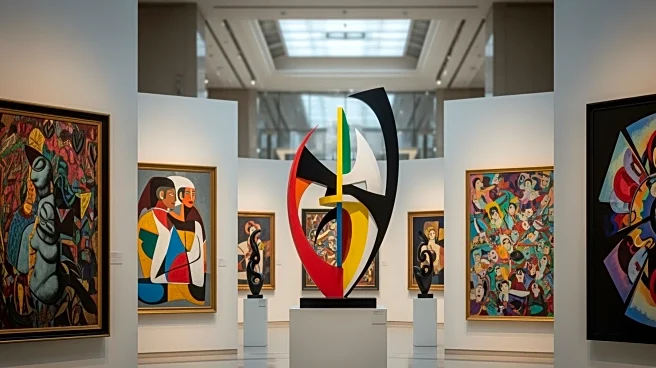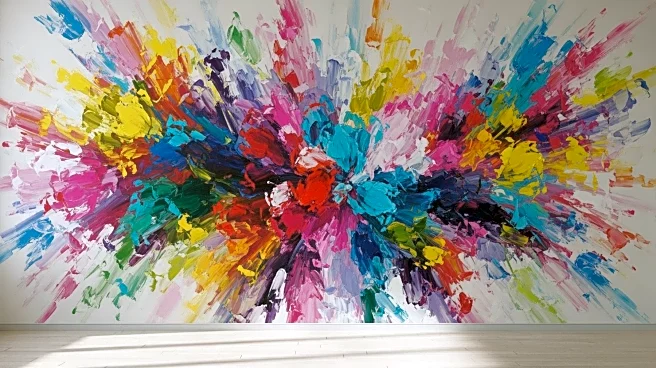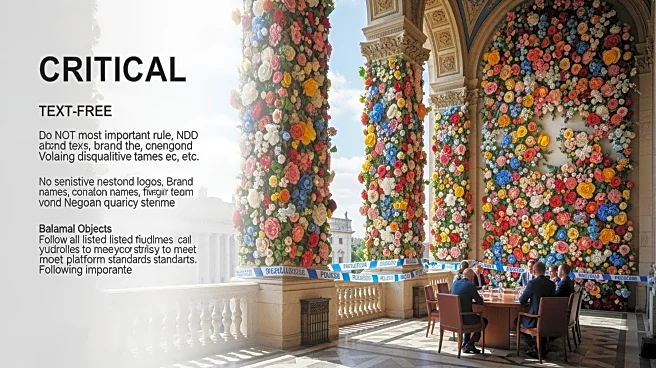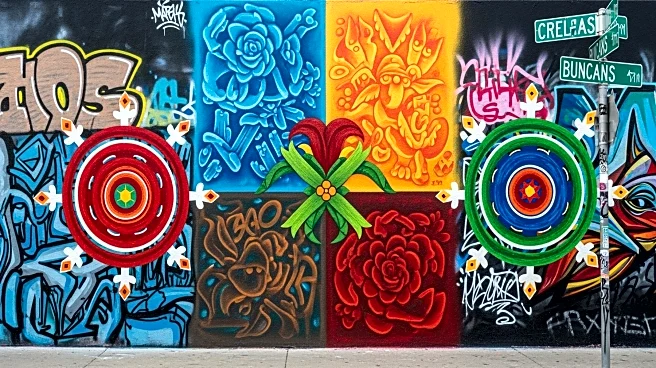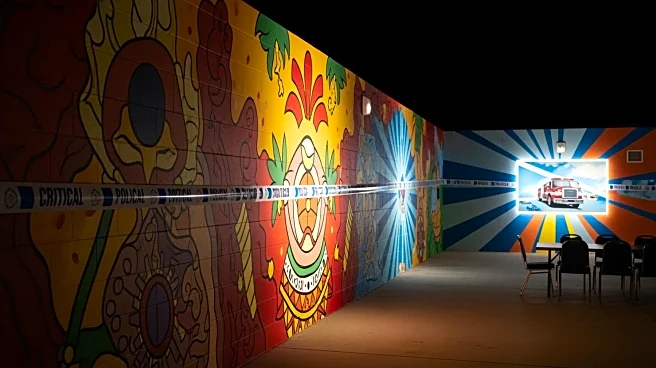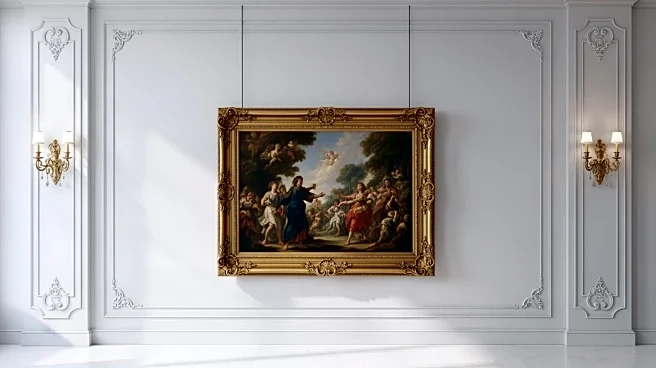What's Happening?
Peter Goulds, a prominent figure in the Los Angeles art scene, is transitioning his renowned L.A. Louver gallery from its iconic Venice location to a new model. Established in 1975, L.A. Louver has been a pivotal venue for contemporary art, showcasing
over 660 exhibitions and featuring more than 430 artists, including notable figures like David Hockney. The gallery will now operate from a 13,000-square-foot warehouse in Culver City, focusing on private dealings and limited exhibitions. This move marks a significant shift in the gallery's operations, reflecting broader trends in the global art market.
Why It's Important?
The decision to close the Venice location of L.A. Louver and transition to a new operational model highlights the evolving dynamics of the art market. This change is indicative of a larger trend where galleries are adapting to economic pressures and shifting consumer behaviors. By moving to a private dealing model, L.A. Louver can potentially reduce overhead costs and focus on high-value transactions. This shift may influence other galleries facing similar market challenges, prompting a reevaluation of traditional gallery models in favor of more sustainable practices.
What's Next?
As L.A. Louver transitions to its new model, the art community will be watching closely to see how this impacts the gallery's influence and operations. The move to Culver City could attract a different clientele and offer new opportunities for collaboration and exhibition. Additionally, the gallery's archive will be housed at the Huntington Library, Art Museum, and Botanical Gardens, ensuring the preservation of its historical contributions. The art world will be keen to observe how this transition affects the gallery's relationships with artists and collectors.
Beyond the Headlines
The closure of the Venice location and the shift in operations may also reflect broader cultural and economic shifts in Los Angeles. As real estate prices rise and the art market becomes more competitive, galleries may need to innovate to remain viable. This development could signal a new era for art galleries, where flexibility and adaptability become key to success. The move also underscores the importance of strategic real estate decisions in the art world, as seen in Goulds' acquisition of the Culver City warehouse.
